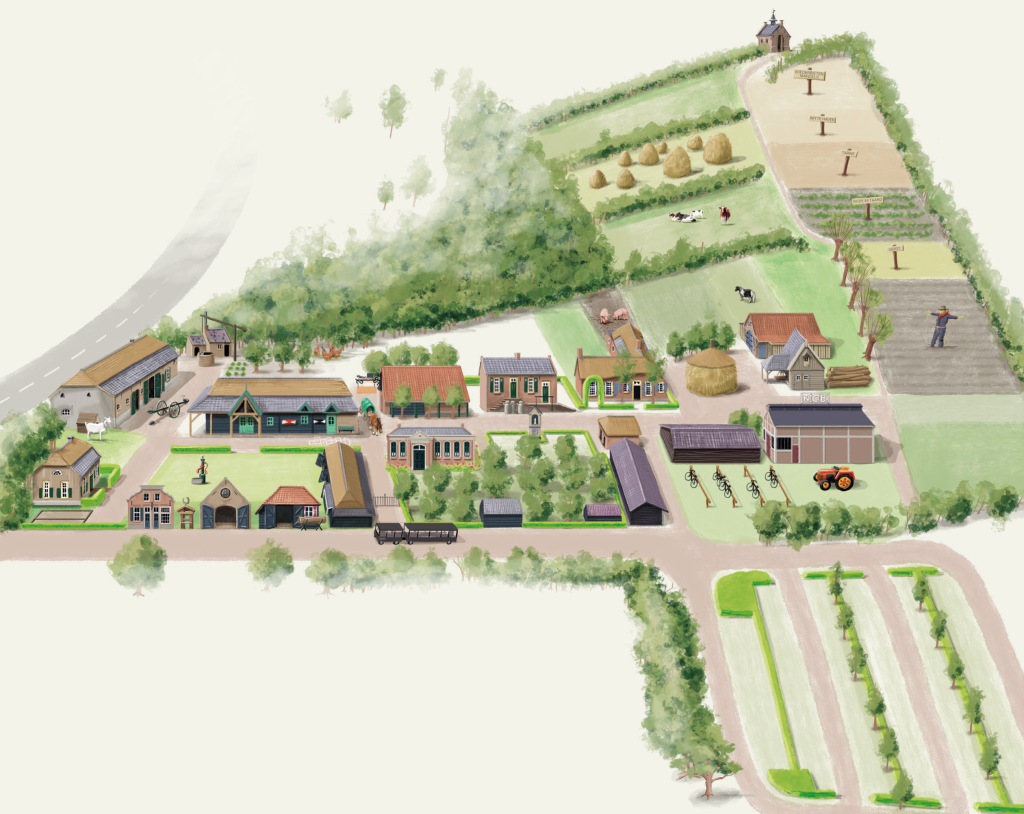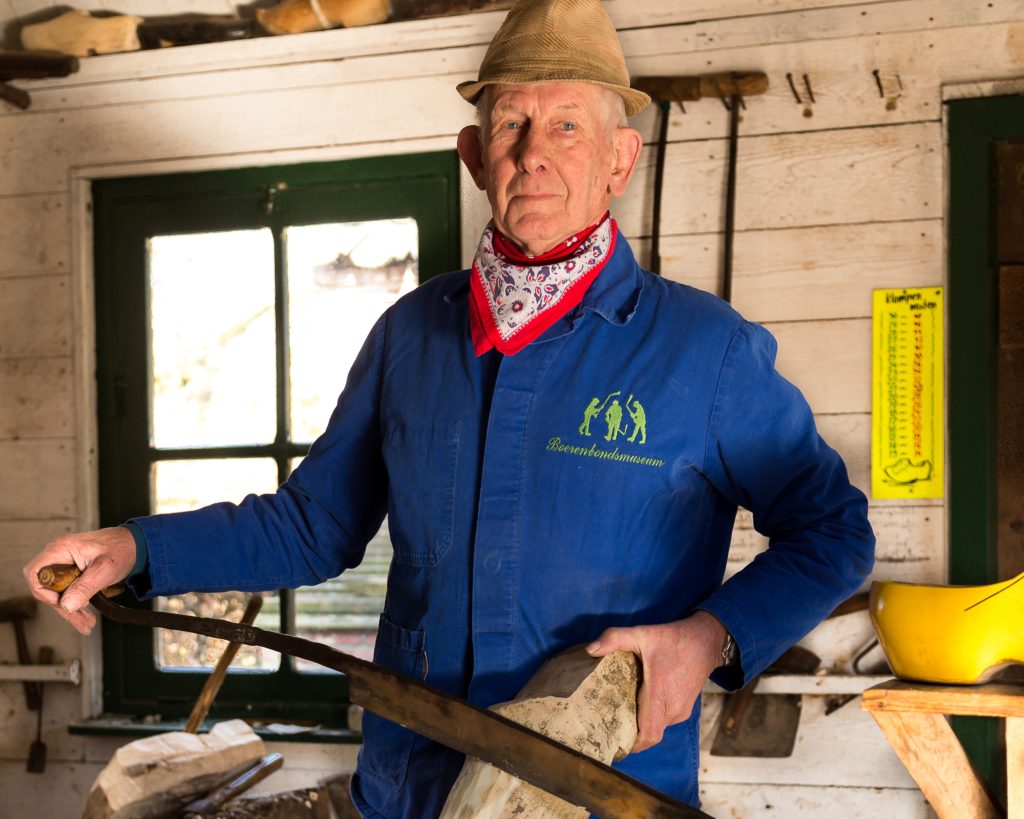
Artisanal clog making
The craft of clog making has a rich tradition in the Netherlands and is still practiced today to preserve this cultural heritage, such as in the Boerenbondsmuseum. The clog maker plays a central role in this; He is the one who forms a pair of clogs from a block of wood, a process that requires both skill and precision.
The clog is made of wood, usually poplar or willow, because of their soft properties and easy workability. Production begins with choosing a suitable block of wood, which is then split and roughly sawn into shape. The clog maker then uses a range of specialized tools, such as gouges and knives, to hollow out and shape the inside and outside of the clog.
A small clog factory of the past was often a simple workshop, equipped with a workbench, a collection of hand tools and a storage place for wood. These workshops were usually family-oriented and locally oriented, with production taking place based on the demand from the surrounding area.


Discover more of the museum
Demonstrations clog making
The Boerenbondsmuseum keeps this traditional craft alive by regularly giving demonstrations of clog making by hand. Visitors can see how a clog maker transforms a piece of wood into a pair of functional and durable clogs. This is not only for education, but also to preserve the traditional craftsmanship involved for future generations.




